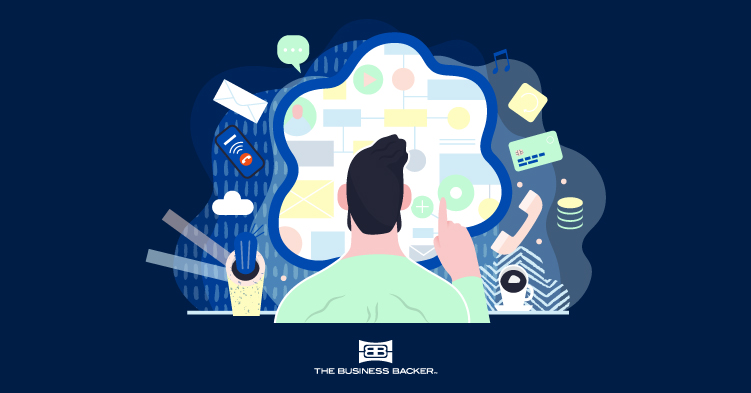How Automation Plays a Key Role In Creating Consistent Customer Experience
Providing a great customer experience is critical to the success of your business. Similarly, poor service could impact your brand’s retention rates. A survey reveals that businesses lose $62 billion a year due to poor customer service.
In some cases, poor customer experience could even lead to the downfall of the business. Spamming subscribers or prospective buyers with unsolicited emails and not giving due importance to customer feedback or complaints are some acts of poor customer service.
Even a single negative experience instance could prompt customers to ditch your brand and switch to your rival brands. A Hubspot survey found that 80 percent of the customers say they’ve ditched a business or brand because of an unpleasant experience.
We have several examples of companies providing a poor customer experience that resulted in public relations disasters. United Airlines is a case in point. Sometime in 2008, Musician Dave Carroll went to United Airlines’ helpdesk to lodge a complaint against the staff who mishandled his guitar on the tarmac during a trip. But the staff were indifferent to him and didn’t pay attention to him. An angry Carroll went public with his complaint by writing a song called “United Breaks Guitars” and posted it on the internet. The song went viral garnering over 20 million views, severely damaging the airline brand.
This incident occurred when social networking platforms were still emerging. Now, in the age of the internet, customers expect a seamless experience from brands. Any misstep on the brand’s part will end up in disaster.
Automation for Better Customer Service
Nowadays, technology has developed so much that now there are many software solutions to help brands provide a seamless customer experience through automation. Automating various business processes plays a key role in creating a consistent customer experience as it can help businesses facilitate communication, address customer concerns, and improve retention.
Here are some automation tips for you to deliver an exceptional customer experience.
Targeted Email Automation
Many companies make the mistake of sending emails with generic content to all the subscribers or prospective customers on their mailing list. It is not a good approach and it may not always yield the desired results.
Automation of email marketing will help here. Modern email marketing has moved away from one-size-fits-all mass mailings and instead focuses on consent, segmentation, and personalization.
You can start by automating how you deliver emails and blog content to the audience. You can create targeted content rather than sending generic content to subscribers or prospects.
Businesses can also use automation tools to cluster their customers and prospects optimally. It helps in delivering appropriate and custom content targeting the right audience.
You can also leverage marketing automation to send timely updates to your visitors or former customers. This way, you can determine what type of content your customers need and it can yield better results.
Real-Time Update Automation
Imagine this scenario: a customer wants to purchase a new pair of shoes of your brand. He visits your website but realizes that the item is out of stock. What will he do? He will just go to see if the items are available on your rivals’ sites, and you lose a potential customer.
Even for a regular customer of a particular brand, it is frustrating to see his favorite items out of stock. To avoid such scenarios, you need to leverage the automation tools to provide customers with real-time updates on your products.
Providing timely updates about the availability and accessibility of your products ensures your customers instantly get the required information. This could help you retain the customer.
Electronic Form Automation
For any organization, it is essential to have internal processes. It is as important and impactful as your external processes.
For example, having automated form processing and submission will minimize issues and ensure prompt responses to your customers.
You can use electronic forms for your sales orders to facilitate your overall ordering process. This process involves multiple steps such as generating an invoice and getting approvals from different stakeholders.
You can also make the most of automation tools to populate visitor details so that it simplifies the purchasing flow for users. You can also use dynamic forms to access the database information on demand.
Customer Feedback Analysis Automation
Customer feedback plays a vital role in the improvement of your product and the success of the business. But feedback can vary from customer to customer. To accurately gauge your customer’s purchasing pattern, reviews can be imperative.
Businesses need to constantly monitor conversion rates, customer engagement, bounce rates, on-screen time, page traffic, etc., to better analyze customers’ interests and behavior. Automating data-driven insights allow you to identify the latest trends and gaps in your service. Your business can then gauge, determine and nurture your prospective clients by leveraging all this valuable content.
There are many solutions that automate analysis, including simple automation processes within most cloud services now. Look for them.
The era of customer loyalty is gone. Even a single instance of an unpleasant customer experience could cost your business. You should constantly monitor the changes and trends in the market. You also need to update your business with new tools such as automation to analyze customer behavior, effectively address their grievances, and survive in a fast-paced business environment.
Automation can help you prevent customer churn rates to a great extent.





